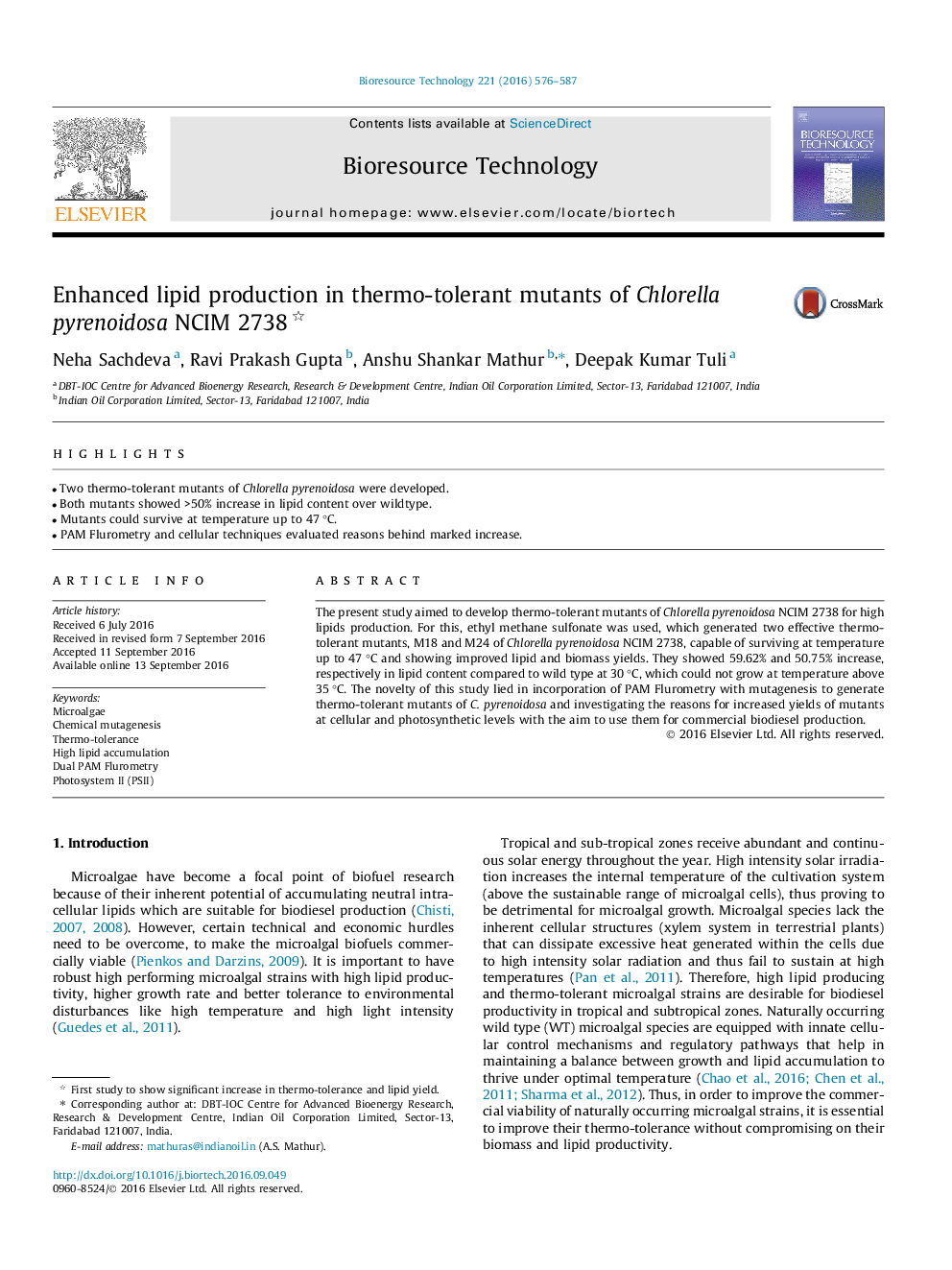| Article ID | Journal | Published Year | Pages | File Type |
|---|---|---|---|---|
| 4998086 | Bioresource Technology | 2016 | 12 Pages |
â¢Two thermo-tolerant mutants of Chlorella pyrenoidosa were developed.â¢Both mutants showed >50% increase in lipid content over wildtype.â¢Mutants could survive at temperature up to 47 °C.â¢PAM Flurometry and cellular techniques evaluated reasons behind marked increase.
The present study aimed to develop thermo-tolerant mutants of Chlorella pyrenoidosa NCIM 2738 for high lipids production. For this, ethyl methane sulfonate was used, which generated two effective thermo-tolerant mutants, M18 and M24 of Chlorella pyrenoidosa NCIM 2738, capable of surviving at temperature up to 47 °C and showing improved lipid and biomass yields. They showed 59.62% and 50.75% increase, respectively in lipid content compared to wild type at 30 °C, which could not grow at temperature above 35 °C. The novelty of this study lied in incorporation of PAM Flurometry with mutagenesis to generate thermo-tolerant mutants of C. pyrenoidosa and investigating the reasons for increased yields of mutants at cellular and photosynthetic levels with the aim to use them for commercial biodiesel production.
